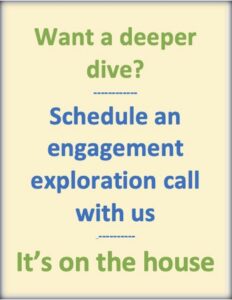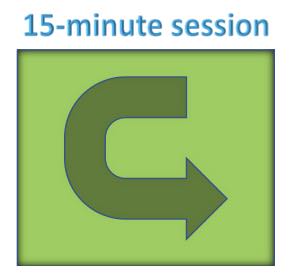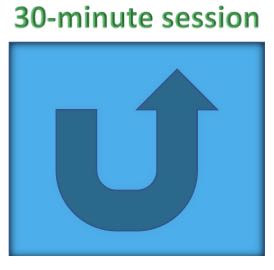The Human View™ Blog

On WIIFMs and WSICs
We spend lots of time - and more than lots of money - finding, implementing and managing benefit plans. Many of them can literally improve the quality of employees' and their families' lives - if they would just use them.
Which means they have to enroll. Which means they have to know there's a program they can enroll in. Which means we have to let them know it exists (messaging / communication / outreach). And we have to describe it - what it's called, how it works, and what it does (education).

Waiter, bring me some more education
Overall, we're pretty good at that. What's harder to answer are the deeper questions:
"What's in it for me?"(WIIFMs) and
"Why should I care?" (WSICs).
Without answering those, hoping for "better choices" is high-hanging fruit. The problem with "education" is that most people don't want to learn about something they're not really interested in.
"What if I get it wrong?"
People also don't want to look or feel foolish - and most employees know they're not benefits experts. So, it falls to us to up our game and start marketing instead of just educating. To enroll in a plan is to buy it. Which means that the act of enrollment is actually a sale.
Which is why there are 75 kinds of toasters. And even why there are 2 or 3 or 4 health plan options. But there's usually just a single choice for wellness, advocacy, navigation, and each kind of point solution. Which means we better be pretty good at selling the WIIFMs and WSICs for those plans.

Personalization via psychographics
The marketing world uses the term "segmentation" to describe how they categorize people according to their beliefs, world views, wants, desires, etc. Another way to think about categorizing people is according to how they prefer to learn, and by what motivates them.
The art of using language to "hook" someone and build desire requires that we frame the benefits of our programs in the most enticing terms. Sure, getting healthier "improves" someone's quality of life. But what does "quality of life" mean to different types of people?
My life would be better if I felt more in control
My life would be better if I had more choices
My life would be better if I knew my family would stay safe and happy
My life would be better if I had more experts I could rely on to advise me
My life would be better if I could just stay focused on today
Each of those basic statements reflects a psychographic profile. If you knew which statement best fit the employee considering a recommended or appropriate plan, then you could answer their unspoken WIIFMs and WSICs. You could create personalized versions of messages, each tailored to connect with specific employee types based on their core values and beliefs. This approach goes far beyond surface-level demographic / generational groupings by tapping into the driving forces behind human decision-making.

Transmit on the frequency they're listening for
By adopting this method, stakeholders can create messages that employees feel are speaking directly to them, in their own language. This personalized approach works because it connects to how our brains actually work, on multiple levels:
It connects with the survival brain, addressing the fight, flee, or freeze response often associated with benefits decisions.
It activates the limbic brain, stirring emotions and desires.
Then, the logical brain will justify the deeper "I want this."
It creates an experience of "this makes sense - and feels right."
The result is a higher likelihood of employees moving from fear and resistance to receptivity, desire, and ultimately, action. They're more likely to engage with the material, enroll in programs, and stay committed over time.
Enroll -> engage -> achieve
For all the stakeholders in the benefits ecosystem, this approach offers significant advantages:
Employers can witness improvements in employee health, reduced health risks, and better clinical compliance.
Vendors can see increased enrollment and sustained engagement.
The ultimate goal of stabilizing or even decreasing health plan costs becomes more achievable.

More effective benefits marketing can also be a key differentiator in a tight labor market. Employees who feel their company understands and caters to their needs are more likely to be engaged, productive, and loyal.
From product-centric to human-centric
The shift from fear and resistance to receptivity, desire, and action isn't just about changing messaging. It's about fundamentally changing the approach to employee benefits communication. It's about recognizing that each employee is an individual with unique values, fears, and desires, and tailoring the approach accordingly.
As the industry moves forward, stakeholders in the employee benefits space should strongly consider adopting a psychographic profiling model. It's time to stop shouting into the void and start having meaningful conversations with employees. By doing so, a win-win situation can be created: employees get the benefits they need and value, while employers and vendors see improved outcomes and ROI.

The last word
The future of employee benefits lies not just in what is offered, but in how those offerings are marketed. By embracing this new paradigm, stakeholders can unlock the full potential of their benefit programs. This can be an alchemical journey, transforming mere education into true engagement, and apathetic resistance to receptivity and action.
~ Mark Head
© 2024. All Rights Reserved.
Aspirations
"Obstacles cannot crush me. Every obstacle yields to stern resolve. Those who are fixed to a star do not change their minds."
~ Leonardo da Vinci

Click the green button or the blue button (below) to visit our scheduling pages.




Mark Head
President
With 4 decades of combined experience in employee benefits consulting, wellness and health management, Head brings a unique combination of dynamic perspectives into a clear vision of where the future of health care is moving - and it's moving towards deeper human connection, awareness, and engagement...
Follow Us On
© 2025 Benefit Personas, LLC. All Rights Reserved.

